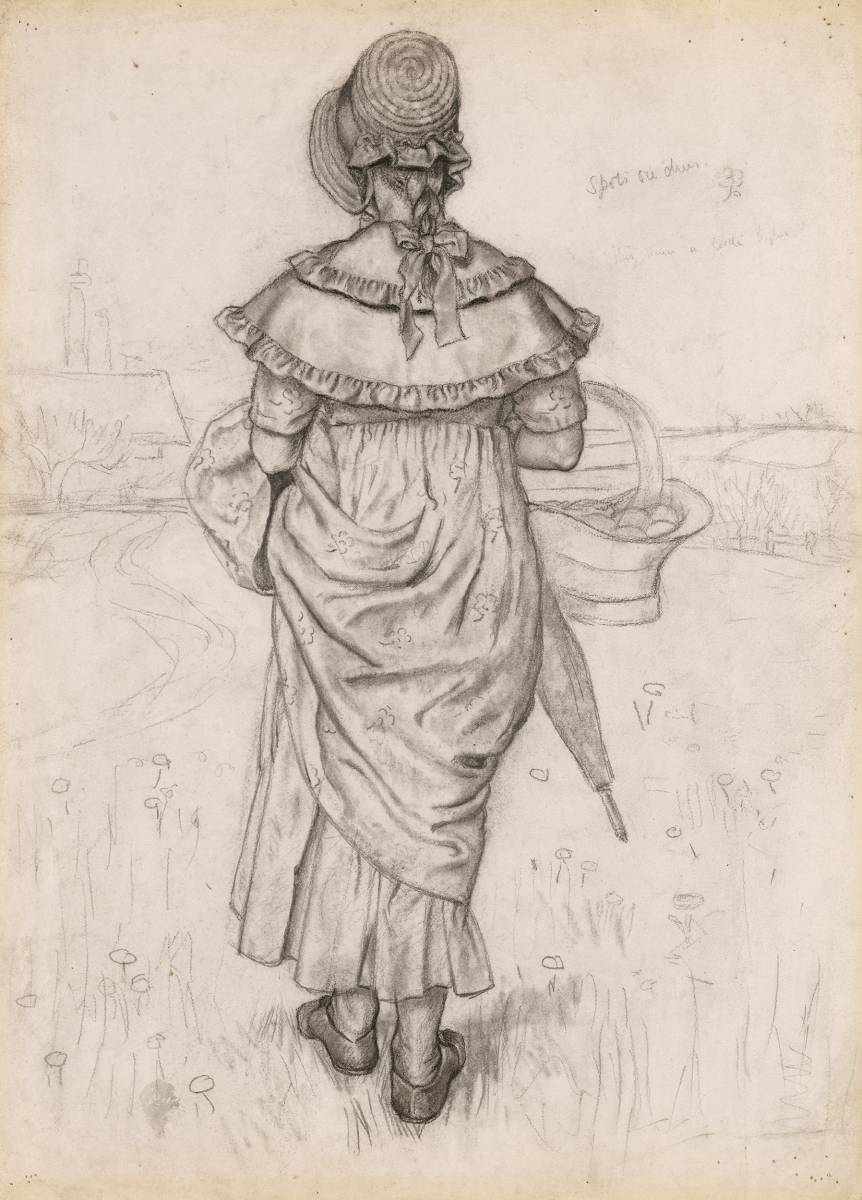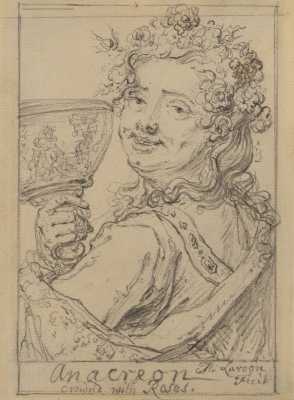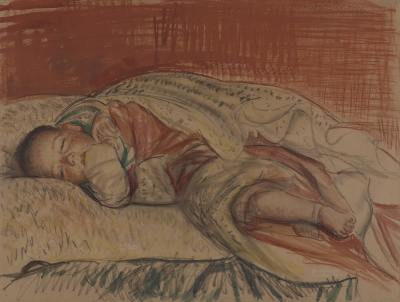This unexpectedly grand and impressive drawing was made by the nineteenth-century illustrator Kate Greenaway in preparation for one of her most successful books Under the Window published in 1879. Greenaway was trained successively at the Finsbury School of Art and Henry Cole’s National Art Training School in South Kensington, latterly attending both the Heatherley School of Fine Art and Slade. Commercially enormously successful, Greenaway’s designs were lionised by the aged John Ruskin who became an important mentor and correspondent. This ambitious figure study suggests that many of Greenaway’s sinuous, aesthetic designs were rooted in careful life-studies; here a woman in Regency costume is seen from behind, carrying basket and umbrella. The figure would eventually appear in abbreviated form in an illustration to one of Greenaway’s own poems Now All of you Come Listen. A compositional study for the frontispiece incorporating this figure is now in the collection of the Huntington Library and Art Gallery, San Marino (accession number 91.239).
_555_800_80_faf9f5.jpg)
Kate Greenaway
Now All of You Come Listen
Watercolour and graphite pencil on wove paper
11 × 7 ½ inches; 279 × 191 mm
The Huntington Library, Art Museum, and Botanical Gardens
Object number 91.239
Kate Greenaway’s father was a wood-engraver and her mother a successful milliner. Her early training was crucial, particularly the time spent at Henry Cole’s National Art Training School with its emphasis on linear design and geometry. Whilst studying in South Kensington she met and became friendly with Elizabeth Thompson, later Lady Butler. Throughout the 1860s Greenaway received a series of commissions from publishers for both illustrations to books and greetings cards. Increasingly successful she received encouragement from a number of established artists including the Royal Academician Henry Stacey Marks and illustrator Walter Crane, who described the designs for Under the Window as combining ‘old world atmosphere tinted with modern aestheticism.’[1] This drawing neatly reflects these twin sensibilities. Greenaway shows the figure of a young woman from behind, dressed in an approximation of Regency costume, whilst there is an immediacy and compression of space suggestive of new developments in art. As Stephen Calloway has suggested, book illustration in the last decades of the nineteenth century drove some of the most avant garde developments and Greenaway’s illustrations often show a fin de siècle sensibility, playing with conventional forms of pictorial space. Beautifully drawn and rendered on a surprisingly ambitious scale, this drawing was almost certainly made from life and underscores what an impressive and ambitious draughtsman Greenaway could be.


